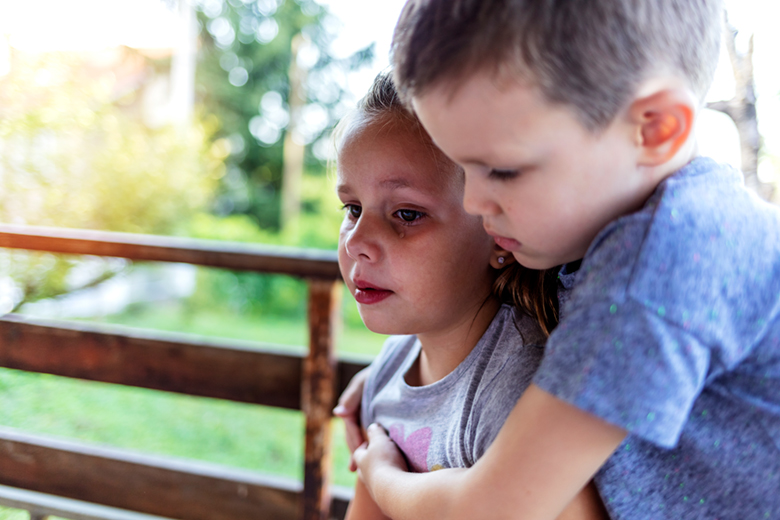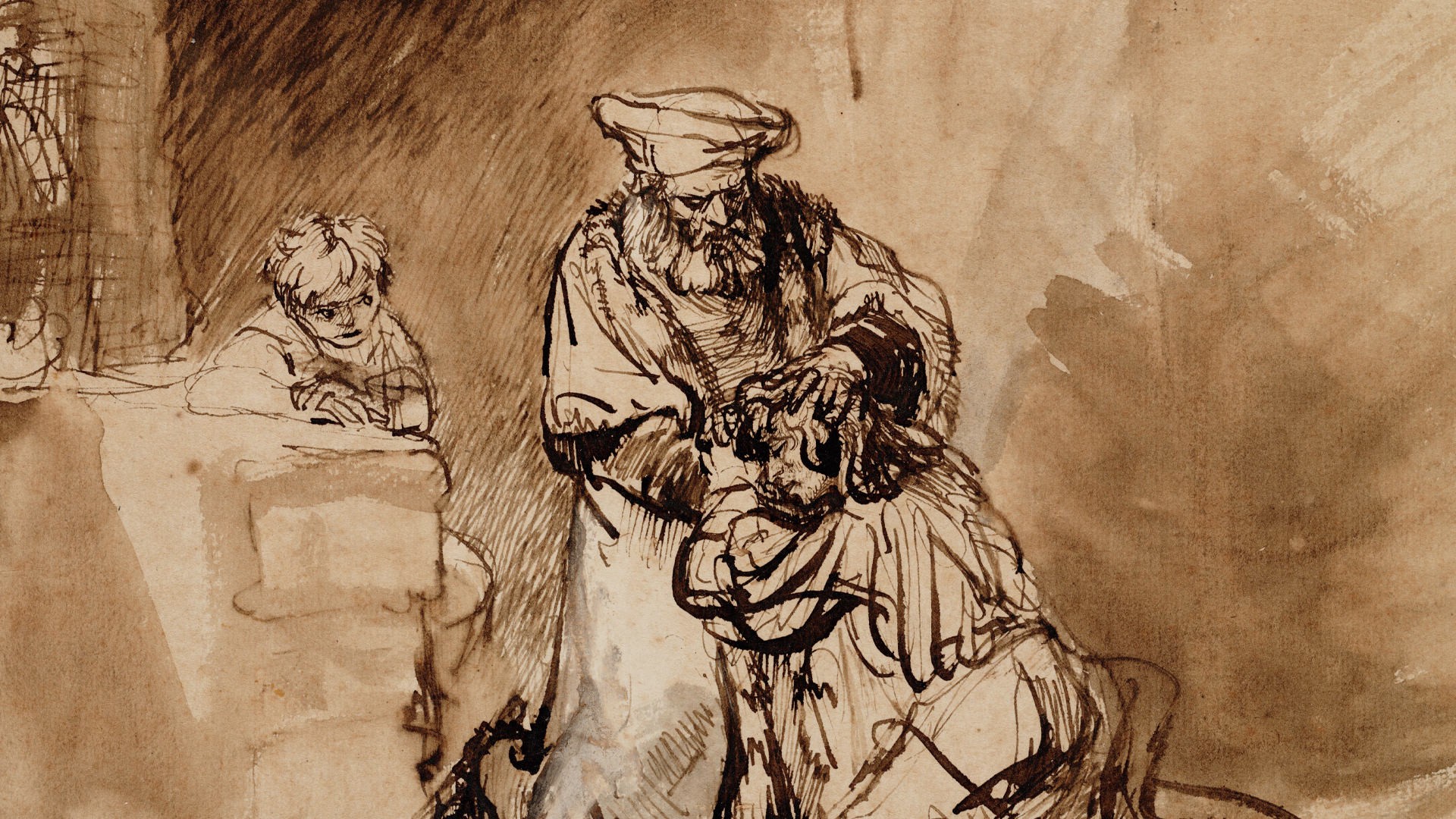The Death of Empathy
Viewed by some as a tool of the devil himself, it’s no wonder that empathy is in ever shorter supply these days, languishing in a world that has never needed it more.
Is empathy dead? If so, what did it die of? Asked recently on social media, these questions elicited a variety of bleak responses. “Not dead, but on life support,” said one. “Hanging by a thread,” said another. Others responded, “Dead from neglect”; “Smothered by self-interest”; “Killed by apathy.”
There’s a clear and palpable sense that our world is suffering an empathy crisis.
When the world is in the throes of an economic crisis, everyone sits up and takes notice. After all, financial hardship hurts, both physically and emotionally. When we become financially bankrupt and are unable to supply our physical needs, it impacts our emotional well-being too. So we go to news sources such as the Financial Times or the Wall Street Journal, because we want to know how vulnerable we are to economic collapse at any given moment.
Are we equally concerned about our vulnerability to emotional bankruptcy and the potential fallout of a global empathy crisis? What would such a crisis look like? Are we looking at one now?
Empathy: What It Is and What It Isn’t
The Oxford Dictionary defines empathy as “the ability to understand and share the feelings of another,” although an important dimension seems to be missing in this simple description. Perhaps a better definition would be that of science writer Maia Szalavitz and child psychiatrist Bruce Perry in their 2010 book, Born for Love. “The essence of empathy,” they write, “is the ability to stand in another’s shoes, to feel what it’s like there and to care about making it better if it hurts.”
Szalavitz and Perry added theirs to the voices of many others who began to notice empathy slipping as the tone of modern culture became increasingly harsh. To them, even a decade ago, the indications of this change ran the gamut “from calls for the legalization of torture to the actual practices uncovered at Abu Ghraib and Guantanamo Bay, and ‘torture porn’ movies like the Saw series.” They also cited reality shows that present the pain and misery of others for our ghoulish entertainment.
“Empathy remains both intensely important and widely misunderstood. Its influence on the way we connect to each other can be seen everywhere, from the nursery to the Federal Reserve.”
A decade later, the situation has not reversed; in fact, some writers have begun pointing to their religious faith as a justification for driving a final stake into the heart of empathy and its close cousin, compassion. In May 2019, one such faith writer referred to empathy as a sin, misdefining it as “to jump with both feet” into someone else’s feelings to a degree that requires abandoning “one’s own beliefs, values, judgments, and reason.” In true straw-man style, the author created his own definition of empathy (without offering evidence to substantiate the redefinition), and then quite literally demonized its value, characterizing it as a tool of the devil.
Before going further in our discussion, then, it’s important to establish that abandoning one’s beliefs, values, judgments or reason is most definitely not a function of empathy—nor of compassion. It’s impossible to have a fruitful discussion if we don’t define our terms precisely, which is what researchers must do when they study how empathy and compassion affect us in real-life situations—such as palliative care, for instance.
As one group of Canadian researchers put the problem in 2016, “one of the conceptual challenges in healthcare literature is that compassion is often confused with sympathy and empathy.” Now, however, empathy seems to be confused by some with the abandonment of “values, judgments, and reason.”
As we continue the present discussion, then, let’s synchronize our terms. Thankfully we don’t have to start from scratch to nail down empathy and its close relatives (sympathy and compassion), since researchers have already done this for us using carefully grounded methods meant to clarify the terms for future studies and to establish standards for clinical practice.
In their meticulous examination of how people personally experience the effects of sympathy, empathy and compassion, researchers from the University of Manitoba determined that sympathy can be described as a pity-based (though generally well-intended) emotional response to someone’s suffering, but without the benefit of understanding what the sufferer is experiencing. Empathy, on the other hand, acknowledges the individual’s suffering and uses “emotional resonance” to try to understand it. And compassion goes a step further: motivated by love and altruism, compassion adds some sort of helpful action, which might include acts of kindness that go above and beyond the call of duty. We may think of the well-known Bible story of the Good Samaritan as an example of compassion.
Nowhere in these definitions is there a call to abandon values, judgments or reason.
Love and Boundaries
It’s easy to see why values, judgment and reason are essential to setting boundaries, which are vital as we express love in all our relationships. Boundaries allow us to feel with someone without losing our sense of self, which includes our values, judgments and reason. Boundaries and empathy are not mutually exclusive: they can and should coexist. Love without boundaries is referred to as “enmeshment,” but this is emphatically not a form of empathy.
Our values, judgment and reason can support empathy, or they can be used as weapons in the absence of empathy and compassion. It can feel deceptively righteous to refuse to extend empathy and compassion to those we have judged to be undeserving of it, especially when we coat our response (or lack thereof) with a veneer of concern and call it “tough love.”
The term tough love was coined by Bill Milliken in a 1968 book by that title. His intention was to help parents lay down appropriate boundaries in a context of unconditional love. The “love” part of the phrase was supposed to refer to the attitude that is clear and present in the enforcement of those boundaries.
Since then, however, the term seems to have taken on a life of its own—used, for instance, to describe the approaches of troubled-teen boot camps that overlooked the love part of the equation entirely, resulting in abuses that sometimes led to the death of teenage inmates. Tragically, it seems that some in our society believe toughness can accomplish more when unfettered by “soft” emotions such as love, empathy and compassion.
This is far from the case. Empathy feeds relationships; and the human brain develops in the context of emotional resonance. This sense of “feeling felt” by another person is an outgrowth of what UCLA psychiatrist Dan Siegel calls mindsight. When we have insight into our own emotional mind maps—self-awareness, some might call it—we find it easier to imagine another person’s point of view. This is the basis of empathy. Words like resonance and attunement are often used to describe this feeling that another person has seen and understood our inner world.
“Our awareness of another person’s state of mind depends on how well we know our own. . . . When we can sense our own internal state, the fundamental pathway for resonating with others is open as well.”
These are the conditions that help us learn and grow. When we’re securely connected in loving relationships and we feel safe in them, we identify with our teachers and mentors and want to please them by fulfilling their expectations for our behavior. When we’re stressed and afraid, learning shuts down. We pull back; we resist. To think that fear, competition, anger or vengeance can reliably motivate others to new and positive ways of thinking is a serious miscalculation.
It would also be a serious miscalculation to suppose that politicizing empathy could have a positive outcome for anyone. And yet empathy is politicized regularly in reference to all kinds of issues: racial inequality, homelessness, unwanted pregnancy, poverty, criminal justice, police brutality, immigration, international conflicts. Showing empathy in any of these areas leaves one vulnerable to being labeled as “too woke.”
Somehow it’s become a problem for some to try to understand someone else’s perspective. If empathy is not dead yet, it certainly seems to have taken a severe beating.

Empathy in an Us-Versus-Them World
Unfortunately the lack of empathy can have a damaging global impact, writes Stephen M. Walt, professor of international relations at Harvard University. Our ability (or inability) to empathize with other perspectives affects the shape of the global order. When states disagree, which of course happens regularly, they may well misunderstand the source of the disagreement, which compounds the problem and escalates animosity.
“For this reason,” says Walt, “one of the lessons I try hardest to impart in my courses is the importance of empathy: the ability to see problems from another person’s (or country’s) perspective. To do this does not require agreeing with their view; it is about grasping how others see a situation and understanding why they are acting as they are. The reason to do this is eminently practical: It’s harder to persuade a rival to alter its behavior if you don’t understand its origins” (emphasis added).
“There are specific networks in the brain devoted to determining whether an individual is one of “us” or one of “them”—and if someone is categorized as “them,” the facility for empathy can be deeply reduced, even shut down entirely.”
But trying to understand the origins of someone else’s behavior is easier said than done. It’s much easier to assume we know the origins of their behavior without imagining ourselves in their shoes, and to judge accordingly. And we can assume some of the worst origins for other people’s behavior.
To illustrate, Walt points to the work of the late social psychologist Lee Ross, whose research into the cognitive bias known as “fundamental attribution error” sheds light on why empathizing with other people can be so hard. Fundamental attribution error is the natural tendency we each have to over-attribute others’ actions to fixed aspects of their personality, while attributing our own actions to the temporary situations we find ourselves in.
For instance, says Walt, “If someone lies to us, . . . we tend to assume it is because their character is flawed, and they lack integrity. They lied because, well, that’s just the kind of person they are. And sometimes, this is true. But if we tell a lie, we are prone to see it as something we had to do given the situation we were in, not as evidence of our own character flaws. If someone else loses their cool and lashes out, we conclude they must be innately hotheaded or have anger management issues instead of considering whether they are overworked, dealing with three small kids in lockdown, or sleep deprived.”
It’s quite understandable that we’d have this tendency. We know our own struggles intimately and have a sympathetic view of our own motivations and desires. On the other hand, we have relatively little insight into what the full picture looks like for someone else. We might see isolated snapshots of that person’s situation, but nowhere near the panoramic view we have of our own. Recognizing the imbalance in our perception requires humility and self-honesty. And this is only one of many natural cognitive biases that get in the way of empathy.
“Empathy takes effort,” acknowledges educator and entrepreneur Seth Godin. “When we extend our heart, our soul and our feelings to another, when we imagine what it must be like to be them, we expose ourselves to risk. The risk of feeling bruised, or of losing our ability to see the world from just one crisp and certain point of view. It’s easier to walk on by, to compartmentalize and to isolate ourselves. Easier, but not worth it.” In other words, empathy requires being comfortable with a certain level of vulnerability.
It also requires—and when it’s extended, it reinforces—a foundation of trust. Suspicion and distrust are archenemies of empathy, which is one reason it’s much easier to extend empathy toward those in our in-groups than to outsiders. But it’s the ability to extend empathy beyond our natural barriers that is most likely to make the difference in building trust and resolving some of our most complex global challenges. Empathy alone isn’t enough to solve all our problems, of course, but as Szalavitz and Perry point out, “few of them can be solved without it.”
Taking one of our most pressing global challenges as an example, even our environment suffers from an empathy shortage. If it seems strange to extend empathy to the planet we live on, consider that the same language we use to describe interpersonal and international relationships transfers easily to our relationship with the earth. We talk of “battling” weeds and fires, “conquering” the wilderness, mountains—even space. Maybe that can help us think of how the planet as a whole suffers at our hands. Suddenly we may see empathy and its resulting compassion as valid approaches to our relationship with nature. Are we trustworthy as caretakers of the planet on which we live?
“We abuse land because we regard it as a commodity belonging to us. When we see land as a community to which we belong, we may begin to use it with love and respect.”
Marc Ian Barasch, author of The Compassionate Life: Walking the Path of Kindness, is founder of the Green World Campaign, a charity working to “reforest our planet, raise the living standards of the rural poor, and combat climate change.” Barasch was also a former editor for Psychology Today. “Compassion isn’t simply opening a spigot and coating everything in a treacly, all-purpose goo,” he says. “It requires a gut hunch that whatever I do unto others, I do unto myself. It calls for appreciating not only what comforts us but what pierces us.”
While Barasch applies this philosophy mainly to human relationships, he also applies it to environmental ethics. Certainly what we do to the earth, we do to ourselves. What pierces the earth pierces us. And if the earth suffers, we suffer. The same is true of our fellow human beings. When one suffers, we all suffer—whether we appreciate that truth or not.
Is empathy dead? “I wouldn’t say empathy is dead,” came one thoughtful response to our question on social media. “I believe it is reserved now as people don’t know who or what to trust in.” We tend to hold back empathy, unfortunately, from those we don’t trust.
Indeed, as we’ve noted, trust and empathy are inextricably bound, forming a foundation for everything from successful relationships and families to stable governments and economies.
Far from being a sin, empathy is firmly tied to love and that universal golden rule that is the prerequisite for a sustainable world: Love your neighbor as yourself.


